Ditapis dengan
E-book The Future of Tradition in Museology
Thirty years ago, Kenneth Hudson, the grand old figure of the European museum world, said that there are chiefly two qualities that will be demanded of the museums in the future: pluralism of interest and the flexibility of imagination. Today, we cannot but admit that he was right. Even if the diversity of definitions of museum is bigger than ever, there is no doubt that modern museums want…
- Edisi
- -
- ISBN/ISSN
- 9789290124665
- Deskripsi Fisik
- 204 hlm
- Judul Seri
- -
- No. Panggil
- 069 RAJ t
E-book A History of Museology
Is museology a theory or a set of practices? Is it a science or just museum work? Is it the same as museum theory? Or is it autonomous from the museum? Is it a philosophy or is it based on social experimentation? Are we evolving towards the path of a metamuseology? If so, what are the boundaries of this ‘museology’ that has shown to have no boundaries in the past decades of theoretical rese…
- Edisi
- -
- ISBN/ISSN
- 9789290124566
- Deskripsi Fisik
- 232 hlm
- Judul Seri
- -
- No. Panggil
- 069 CHU a
E-book Key Concepts of Museology
What is a museum? How do we defi ne a collection? What is an institution? What does the term ‘heritage’ encompass? Museum professionals have inevitably developed answers to questions such as these, which are fundamental to their work, compiled according to their knowledge and experience. Do we need to reconsider these? We believe so. Museum work shifts back and forth between practice and th…
- Edisi
- -
- ISBN/ISSN
- 9782200253981
- Deskripsi Fisik
- 90 hlm
- Judul Seri
- -
- No. Panggil
- 069 DES k
E-book Working Through Colonial Collections
his research was funded by the Alexander von Humboldt Foundation as part of the research award for Sharon Macdonald’s Alexander von Humboldt Professorship, and was carried out at the Centre for Anthropological Research on Museums and Heritage (CARMAH) at the Department for European Ethnology, Humboldt-Universität zu Berlin. I also received financial support from the Ge…
- Edisi
- -
- ISBN/ISSN
- 9789461664242
- Deskripsi Fisik
- 320 hlm
- Judul Seri
- -
- No. Panggil
- 069 VON w
E-book The Museum Accessibility Spectrum : Re-imagining Access and Inclusion
Central to the practice of the modern museum sector are the principles of access, inclusion, diversity, sustainability, and community participation (ICOM, 2022). As the curators of our cultural and social histories, the heritage sector is morally and legally required to provide reasonable adjustments to ensure equitable access or all people. The dictionary definition of access is the me…
- Edisi
- -
- ISBN/ISSN
- 9781003382713
- Deskripsi Fisik
- 313 hlm
- Judul Seri
- -
- No. Panggil
- 069 EAR t
E-book The Aftermaths of Participation
It has been seven years since the so-called refugee crisis in Europe, andwarfarecontinuestoforcepeopletoleavetheirhomelandstosettleelsewhere.AsIamwritingthis,inAprilof2022,RussiantroopsaretearingapartUkraineand the lives of its people, forcing many people to flee their homes. Forcedmigration is not temporary phenomenon, and historical, ethnographic andcity museums will –one wayor another –c…
- Edisi
- -
- ISBN/ISSN
- 9783839464113
- Deskripsi Fisik
- 273 hlm
- Judul Seri
- -
- No. Panggil
- 069 BOE t

E-book The Empty Showcase Syndrome: Tough Questions about Cultural Heritage f…
European countries, including the Netherlands, are increasingly more willing to return looted art to their former colonies. In doing so, however, they are confronted with hard choices. In The Empty Showcase Syndrome, Jos van Beurden explores three of the toughest questions that countries and governments face. First, former colonial powers often hesitate to relinquish control over the provenance…
- Edisi
- -
- ISBN/ISSN
- 9789048564071
- Deskripsi Fisik
- 161 halaman
- Judul Seri
- -
- No. Panggil
- 069 BEU t
E-book What Photographs Do: The Making and Remaking of Museum Cultures
What are photographs ‘doing’ in museums? Why are some photographs valued and others not? Why are some photographic practices visible and not others? What value systems and hierarchies do they reflect? What Photographs Do explores how museums are defined through their photographic practices. It focuses not on formal collections of photographs as accessioned objects, be they ‘fine art’ or…
- Edisi
- -
- ISBN/ISSN
- 9781800082984
- Deskripsi Fisik
- 357 hlm
- Judul Seri
- -
- No. Panggil
- 069 EDW w
E-book Practicing Decoloniality in Museums : A Guide with Global Examples
Colonialism was not just a historical policy concerning the domination of other territories and their peoples. It included racial and racist ideologies to ‘legitimize’ such domination, the suppression of aspects of identity such as language and traditions, and the propaganda of a Western system of knowledge. Nations, organizations, companies, and individual actors were all involved in diffe…
- Edisi
- -
- ISBN/ISSN
- 9789048554836
- Deskripsi Fisik
- 127 hlm
- Judul Seri
- -
- No. Panggil
- 069 ARI p
E-book Hybrid Museum Experiences : Theory and Design
The design aim for hybrid museum experiences, of integrating digital technology closely with the museum space and the museum visit, means that hybrid museum visits need to strike other diff icult balances – they need to be hybrid in more than one respect. In particular, hybrid museum experiences need to take into account how museum visits are performed. Museum technology falls on a scale betw…
- Edisi
- -
- ISBN/ISSN
- 9789048552849
- Deskripsi Fisik
- 232 hlm
- Judul Seri
- -
- No. Panggil
- 069 WAE h
E-book Heritage Dynamics : Understanding and adapting to change in diverse he…
How is heritage created and re- created, shaped and reshaped, formed, reformed and transformed – or even reborn? Heritage in all its forms endures a lengthy and dynamic journey of emergence, transformation, decline and revival. An object displayed within a museum showcase may have travelled through various places and changed uses more than once before acquiri…
- Edisi
- -
- ISBN/ISSN
- 9781787358331
- Deskripsi Fisik
- 255 hlm
- Judul Seri
- -
- No. Panggil
- 069 FOU h
E-book Heritage Conservation and Social Engagement
Professionals working with cultural heritage preservation have had to respond to difficult challenges in the last few decades, mainly brought about by globalisation, armed conflicts, natural disasters and the use of heritage as an ultimate resource to redress injustices of the past. The topics and experiences discussed in this book demonstrate that conservators may …
- Edisi
- -
- ISBN/ISSN
- 9781787359208
- Deskripsi Fisik
- 199 hlm
- Judul Seri
- -
- No. Panggil
- 069 PET h
E-book Making the Palace Machine Work : Mobilizing People, Objects, and Natur…
The Qing, the last dynasty of the Chinese imperium, ruled for over 260 years (1644-1911). At the end of the 19th century it occupied a territory of roughly 13 million square kilometres and claimed sovereignty over more than 400 million people. One of the questions this book examines is how – on a sheer logistical level – was a complex empire of this size governed before the age of telegrams…
- Edisi
- -
- ISBN/ISSN
- 9789048553228
- Deskripsi Fisik
- 335 hlm
- Judul Seri
- -
- No. Panggil
- 069 AKC m
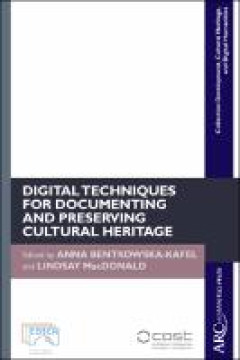
E-Book Digital Techniques for Documenting and Preserving Cultural Heritage
This book presents interdisciplinary approaches to the examination and documentation of material cultural heritage, using non-invasive spatial and spectral optical technologies.
- Edisi
- -
- ISBN/ISSN
- 9781942401346
- Deskripsi Fisik
- 370 halaman, ilus.
- Judul Seri
- -
- No. Panggil
- 069 BEN d
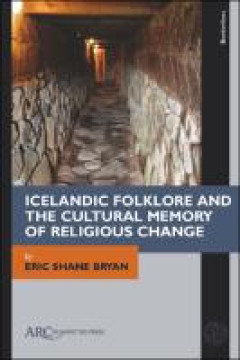
E-Book Icelandic Folklore and the Cultural Memory of Religious Change
This book attempts to understand the origins and development of religious belief in Iceland and greater Scandinavia through the lenses of five carefully selected Icelandic folktales collected in Iceland during the nineteenth century. Each of these five stories has a story of its own: a historical and cultural context, a literary legacy, influences from beliefs of all kinds (orthodox and heterod…
- Edisi
- -
- ISBN/ISSN
- 9781641893756
- Deskripsi Fisik
- 171 halaman, ilus.
- Judul Seri
- -
- No. Panggil
- 270 BRY i
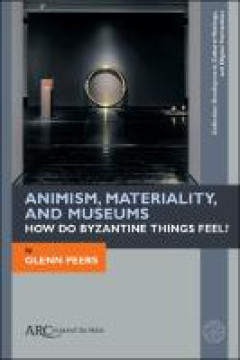
E-Book Animism, Materiality, and Museums: How Do Byzantine Things Feel?
Among our most cherished modern assumptions is our distance from the material world we claim to love or, alternately, to dominate and own. As both devotional tool and art object, the Byzantine icon is rendered complicit in this distancing. According to well-established theological and scholarly explanations, the icon is a window onto the divine: it focuses and directs our minds to a higher unde…
- Edisi
- -
- ISBN/ISSN
- 9781942401742
- Deskripsi Fisik
- 178 halaman, ilus.
- Judul Seri
- -
- No. Panggil
- 709.02 PEE a
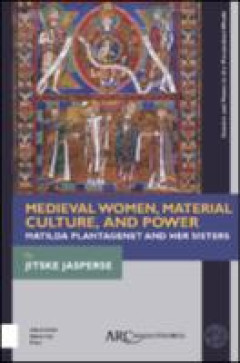
E-Book Medieval Women, Material Culture, and Power: Matilda Plantagenet and h…
This book argues that the impressive range of belongings that can be connected to Duchess Matilda Plantagenet allows us to perceive elite women’s performance of power, even when they are largely absent from the official documentary record.
- Edisi
- -
- ISBN/ISSN
- 9781641891455
- Deskripsi Fisik
- 149 halaman
- Judul Seri
- -
- No. Panggil
- 709.02 JAS m
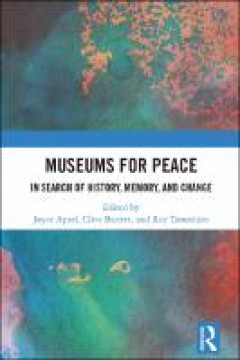
E-Book Museums for Peace: In Search of History, Memory, and Change
Museums for Peace: In Search of History, Memory and Change highlights the inspiring as well as conflicting representations and purposes of diverse museums for peace around the world. Coming from various cultural and professional backgrounds, the authors explore “what are museums for peace and what do they mean?” Some chapters introduce alternative histories of peace, conflict, and memoriali…
- Edisi
- -
- ISBN/ISSN
- 9781003818045
- Deskripsi Fisik
- 255 halaman
- Judul Seri
- -
- No. Panggil
- 069 APS m
E-Book Mind Museums: Former Asylums and the Heritage of Mental Health
Mind Museums offer a fresh perspective on the heritage of mental health, bringing museums into sharp focus. Drawing on interdisciplinary approaches from architecture, museum and exhibition design, and heritage and museum studies, it examines former psychiatric asylums that have been converted into museums. The book presents a comprehensive investigation of mind museums, the first of its kind in…
- Edisi
- -
- ISBN/ISSN
- 9781003861775
- Deskripsi Fisik
- 139 halaman
- Judul Seri
- -
- No. Panggil
- 069 LAN m
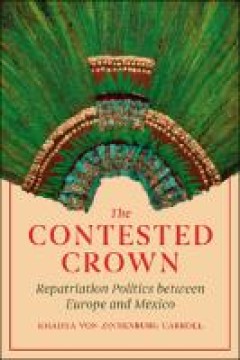
E-Book The Contested Crown: Repatriation Politics between Europe and Mexico
Following conflicting desires for an Aztec crown, this book explores the possibilities of repatriation. In The Contested Crown, Khadija von Zinnenburg Carroll meditates on the case of a spectacular feather headdress believed to have belonged to Montezuma, the last emperor of the Aztecs. This crown has long been the center of political and cultural power struggles, and it is one of the most cont…
- Edisi
- -
- ISBN/ISSN
- 9780226802237
- Deskripsi Fisik
- 240
- Judul Seri
- -
- No. Panggil
- 978 CAR t
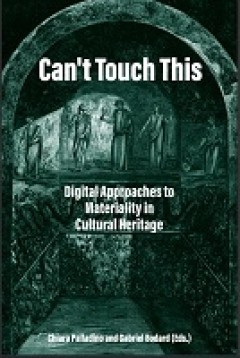
E-Book Can’t Touch This: Digital Approaches to Materiality in Cultural Heri…
What are the implications of digital representation on intellectual property and ownership of cultural heritage? Are aspirations to preservation and accessibility in the digital space reconcilable with cultural sensitivities, colonized history, and cultural appropriation? This volume brings together different perspectives from academics and practitioners of Cultural Heritage, to address current…
- Edisi
- -
- ISBN/ISSN
- 9781914481321
- Deskripsi Fisik
- 262 halaman
- Judul Seri
- -
- No. Panggil
- 069 PAL c
E-book Caribbean Cultural Heritage and the Nation : Aruba, Bonaire and Curaç…
Centuries of intense migrations have deeply impacted the development of the creo-lised Papiamentu/o-speaking cultures of Aruba, Bonaire, and Curaçao. These three islands, together with the three windward islands of St. Maarten, St. Eustatius, or Statia, and Saba, nine hundred kilometres to the northeast, plus the Netherlands in Europe, another seven thousand kilometres to the northeast, form t…
- Edisi
- -
- ISBN/ISSN
- 9789400604278
- Deskripsi Fisik
- 351 hlm
- Judul Seri
- -
- No. Panggil
- 069 BAU c
E-book Heritopia : World Heritage and Modernity
The pharaoh had been able to look at his reflection in the Nile for thousands of years. But now his face was sawn off, raised, and removed. One by one, stone blocks from the colossal statues were removed from the site. Was this because of a desire to obliterate the memory of a powerful absolute ruler? Was it an example of iconoclasm, in which the face of the …
- Edisi
- -
- ISBN/ISSN
- 9789198469936
- Deskripsi Fisik
- 336 hlm
- Judul Seri
- -
- No. Panggil
- 069 WIE h
E-book Mobile Museums : Collections in Circulation
This book presents an argument for the importance of circulation in the study of museum collections, past and present. Bringing together international researchers from a wide variety of disciplines (including the history of science, museum anthropology, archaeology, geography and postcolonial history) to consider the mobility of collections, we aim to provi…
- Edisi
- -
- ISBN/ISSN
- 9781787355088
- Deskripsi Fisik
- 375 hlm
- Judul Seri
- -
- No. Panggil
- 069 AUG m
 Karya Umum
Karya Umum  Filsafat
Filsafat  Agama
Agama  Ilmu-ilmu Sosial
Ilmu-ilmu Sosial  Bahasa
Bahasa  Ilmu-ilmu Murni
Ilmu-ilmu Murni  Ilmu-ilmu Terapan
Ilmu-ilmu Terapan  Kesenian, Hiburan, dan Olahraga
Kesenian, Hiburan, dan Olahraga  Kesusastraan
Kesusastraan  Geografi dan Sejarah
Geografi dan Sejarah